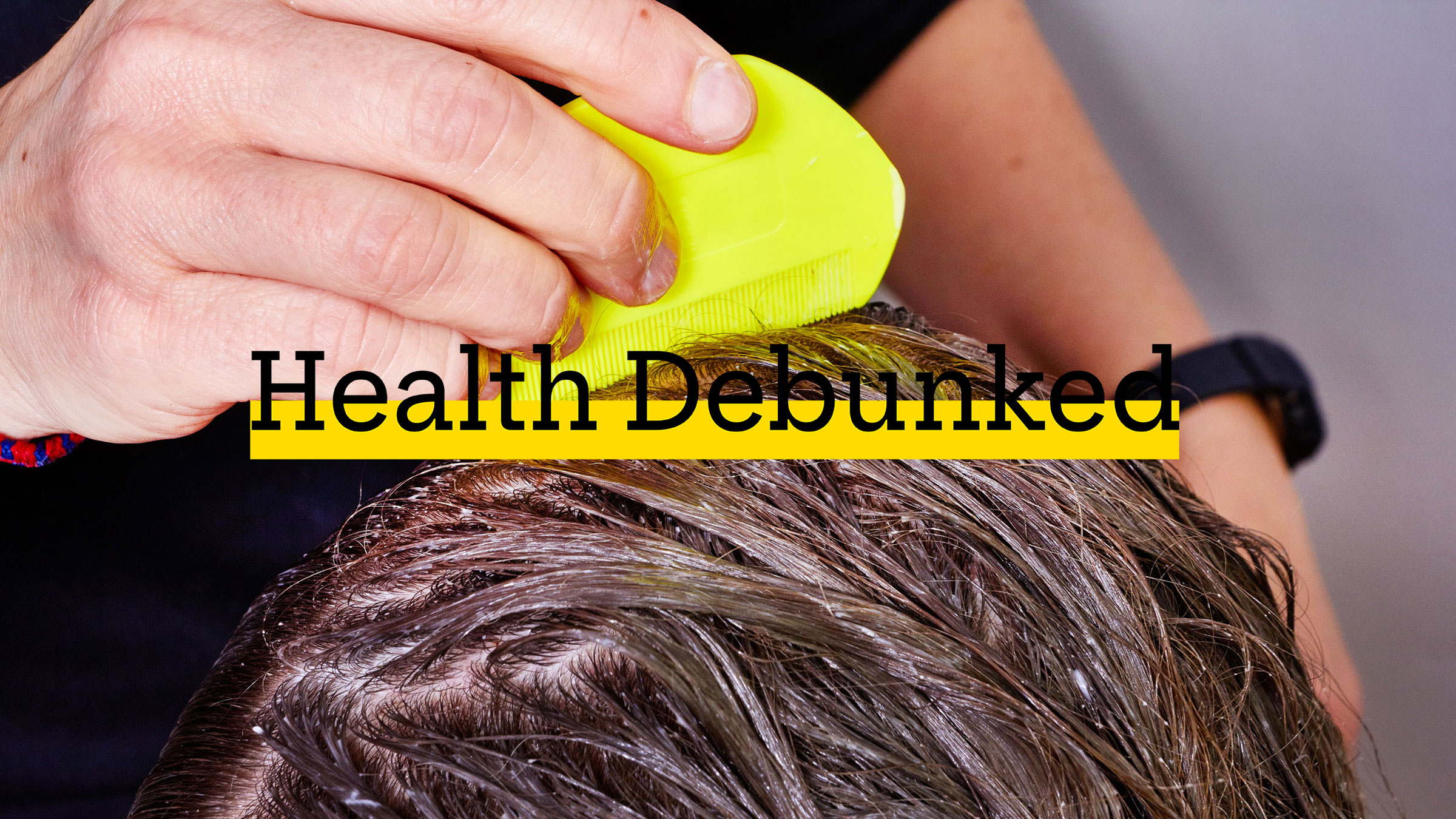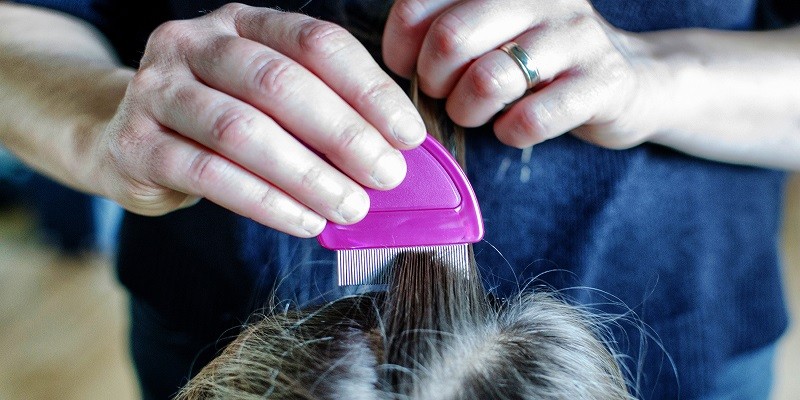Last Updated on October 14, 2023
Yes, lice can thrive on clean as well as dirty hair. Contrary to popular belief, the cleanliness of one’s hair does not play a significant role in whether or not they are plagued by lice.
Lice are parasites that require human blood to survive, and they prefer to live in warm and dark places, such as the scalp. As long as there is hair present, lice will cling to it, whether it is dirty or clean.
However, it is easier to spot lice on clean hair, which could give the impression that they only infest clean hair. Regular hair washing and proper hygiene practices are still essential for maintaining healthy and lice-free hair. Additionally, knowing how lice spread and preventing contact with others who have lice can also help to prevent infestation.

Credit: www.goodrx.com
How Lice Live And Survive
Overview Of The Lice’S Life Cycle And Behavior:
Lice are tiny, wingless insects that live on the scalp, neck, and ears of human beings. They belong to the pediculidae family, and there are three types of lice: head lice, body lice, and pubic lice. Here is a brief overview of their life cycle and behavior:
- Adult head lice are about the size of a sesame seed and are beige to grayish-brown in color.
- The female louse can lay up to six eggs, called nits, per day. The nits are glued to the hair shafts near the scalp and are about the size of a pinhead.
- After about a week, the eggs hatch into nymphs, which look like smaller versions of adult lice and feed on human blood.
- About ten days later, the nymphs mature into adult lice and the cycle begins again.
Explanation Of Why Lice Infest Human Hair And What They Feed On:
Lice need human blood to survive and reproduce. They can’t fly or jump, so they crawl from one person’s head to another through head-to-head contact or by sharing combs, brushes, hats, and other personal items. Here are some key points about why lice infest human hair and what they feed on:
- Lice are highly contagious and can infest anyone regardless of their hygiene habits. Contrary to popular belief, they actually prefer clean hair, as it makes it easier for them to cling to the hair shafts.
- Lice feed on human blood several times a day, piercing the scalp with their mouths to suck blood. Their saliva contains a chemical that prevents blood from clotting, which can cause itching, redness, and skin irritation.
Discussion Of The Risks And Health Issues That Lice Carry:
Although lice are not known to spread diseases, they can pose some hygiene and health risks if left untreated. Here are some key points to consider:
- Scratching the scalp can lead to skin infections and even hair loss in severe cases.
- People with lice may feel embarrassed or ashamed, and it can affect their social life and mental health.
- Lice infestations can spread quickly in schools, childcare centers, and other crowded environments, so it’s important to seek treatment as soon as possible.
- Over-the-counter or prescription treatments are available to get rid of lice, but it’s essential to follow the instructions carefully to avoid potential side effects or treatment failure.
Relationship Between Hair Cleanliness And Lice Infestation
Do Lice Like Clean Hair?
Dealing with lice infestations can be an annoying and messy ordeal. When it comes to lice infestations, most people tend to think that only dirty hair can end up playing host to these pests. But is there any truth in this claim?
We’ll debunk the myth that lice infest only dirty hair and explore how personal hygiene can help in preventing lice infestations.
The Myth About Lice Infesting Only Dirty Hair And Debunking The Misconception.
Contrary to popular belief, lice infestations are not caused by poor hygiene. It is true that lice thrive in dirty conditions, but it does not mean that having clean hair is enough to keep lice away. Lice infestations can occur in any hair type, regardless of how clean or dirty it is.
That being said, certain factors, such as hair length and texture, can make it easier for lice to move from one person to another.
Explanation Of How Lice Can Infest Any Type Of Hair, Regardless Of Its Cleanliness.
Lice infestations occur mainly through head-to-head contact with someone who is already infested with lice. When the lice move from one head to another, they do not differentiate between clean or dirty hair. Additionally, using someone else’s personal items like combs, hairbrushes, and hats can also help in lice infestations.
Lice can live on these items for a few days, increasing the risk of infestation.
Highlighting The Role Of Personal Hygiene In Preventing Lice Infestations.
Personal hygiene plays a significant role in preventing and managing lice infestations. While having clean hair does not necessarily prevent lice infestations, frequent hair washing, combing, and using hair care products can help in detecting and removing lice from the hair.
Additionally, avoiding head-to-head contact with others, especially those already infested with lice, can help prevent lice infestations.
Lice infestations are not caused by poor hygiene or dirty hair exclusively. Anyone can get lice regardless of their hair’s cleanliness. However, maintaining personal hygiene and taking precautionary measures can help prevent and manage lice infestations.
Factors Contributing To Lice Infestations
Lice infestations are common, especially among children. While many people believe that only those with poor hygiene can get lice, that’s not true. In fact, lice like clean hair just as much as dirty hair. Factors that increase the likelihood of lice infestations include a child’s age, gender, and socioeconomic background.
- Age: Children between ages three and 11 are most likely to get lice. This is because they often play together in close proximity, making it easier for lice to crawl from one child’s head to another.
- Gender: Girls are more likely to get lice than boys. This could be because girls typically have longer hair that is often loose, making it easier for lice to move between heads.
- Socioeconomic background: Lice can affect anyone, regardless of their socioeconomic background. However, children from lower-income families are more likely to get lice because they may not have access to the same level of resources and hygiene products as other children.
Overview Of Lice Transmission Methods
Lice can be transmitted through direct head-to-head contact or by using contaminated items. Understanding how lice are transmitted is important in preventing the spread of infestations.
- Head-to-head contact: Lice can easily crawl from one head to another when children play together or when they share personal items, such as hats, combs, and hairbrushes.
- Contaminated items: Lice can also be transferred through contaminated items. For example, lice can live on clothing, bedding, and furniture for up to two days. If a child comes into contact with these items, they may contract lice.
Explanation Of How School And Community Outbreaks Can Occur
Lice outbreaks can occur in schools and communities, and understanding how they happen can help prevent their spread.
- Sharing personal items: When children share personal items, such as hats, combs, and hairbrushes, lice can easily spread from one child’s head to another.
- Close contact: Children who have close contact with an infested person are more likely to get lice. This often happens at school when children play or work closely together.
- Lack of awareness: Some people may not be aware that they have lice, which can lead to the spread of infestations. It’s important to regularly check for lice and treat infestations promptly to prevent their spread.
While lice like clean hair, anyone can get lice regardless of their personal hygiene habits. Understanding the factors that contribute to lice infestations, the methods of transmission, and how outbreaks can occur is critical in preventing their spread. By taking proactive steps to reduce the likelihood of transmission, we can help keep our families, schools, and communities lice-free.
Treatment And Prevention Of Lice Infestations
Discussing The Treatment Options For Lice Infestations
Lice infestations can be irritating and difficult to get rid of. Fortunately, there are various types of treatments available. Here are the key points to keep in mind:
- Medicated shampoos: Over-the-counter medicated shampoos can eliminate lice. Some of these shampoos contain permethrin, while others have pyrethrin as their active ingredient. These shampoos should be applied to dry hair and then rinsed off after 10 minutes.
- Prescription medication: If over-the-counter shampoos do not work, prescription drugs may be necessary. Such drugs include malathion and ivermectin.
- Alternative treatments: Some people may choose to try alternative treatments such as tea tree oil or vinegar. However, there is little scientific evidence to support the effectiveness of these treatments.
Highlighting The Importance Of Proper Cleaning And Disinfection Procedures After Lice Infestation
After lice infestation, it is important to disinfect and clean your home, personal belongings, and clothing. These key points should be kept in mind:
- All clothes, beddings, towels, and other washable items should be washed in hot water and dried in a dryer’s hottest setting for 20 minutes.
- Non-washable items, like brushes and combs, should be soaked in hot water for at least 10 minutes then washed with soap and water.
- Vacuuming your furniture, carpets, and floors can help eliminate lice and their eggs.
Providing Practical Tips For Preventing Lice Infestations
Preventing lice infestations is easier than treating them. Here are a few practical tips to keep in mind:
- Avoid sharing combs, brushes, hats, and other personal items with someone who has lice.
- Wear hair in ponytails, braids, or buns to minimize the potential of lice crawling onto your scalp.
- Frequently check your hair for lice. If detected, take the necessary steps to eliminate it before it becomes a problem.
- Educate your children on the importance of avoiding head-to-head contact with infected individuals.
Remember, lice infestations can happen to anyone, but with proper treatment and prevention, they can be eliminated.
Frequently Asked Questions On Do Lice Like Clean Hair?
Can Lice Survive On Clean Hair?
Yes, lice can survive on clean hair because they attach their eggs to the hair shafts.
How Do Lice Spread?
Lice can spread through direct head-to-head contact or by sharing personal items like combs and hats.
Do Lice Prefer Certain Hair Types?
No, lice can infest any hair type, but they prefer hair that is clean, dry, and straight.
How Can You Prevent A Lice Infestation?
You can prevent a lice infestation by avoiding head-to-head contact and not sharing personal items like combs and hats.
What Should You Do If You Have Lice?
If you have lice, you should use a lice treatment shampoo and comb your hair with a fine-toothed comb to remove the nits.
Conclusion
Overall, it is a common misconception that lice only infest dirty hair. On the contrary, lice are not picky and will attach to any hair regardless of cleanliness. While it may be easier for lice to grab onto greasy hair, they are capable of clinging to clean, freshly washed hair as well.
Therefore, maintaining good personal hygiene may help prevent lice infestation, but it is not a guaranteed solution. It is important to recognize the signs of lice and take appropriate action to eradicate them. This includes utilizing natural or chemical treatments, thoroughly cleaning bedding and clothing, and avoiding close contact with individuals who have lice.
By being aware of the facts about lice and taking the necessary precautions, we can reduce the spread of these pesky pests.




